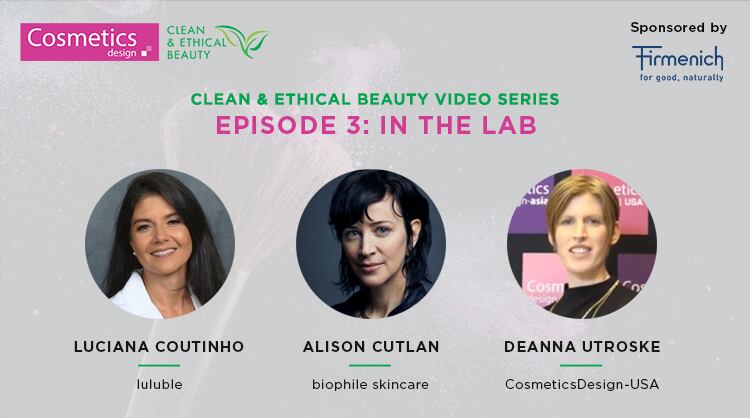Cosmetics and personal care brands in general as well as those leading the clean and green beauty movements are now regularly emphasizing safety and hygiene as consumers get more accustomed to the realities of life in the midst of a health pandemic and global economic crisis.
But this hasn’t diminished the importance of following 3 fragrance industry trends; rather, it’s made them all the more significant and is accelerating the innovation pipeline of both suppliers and brands.
Fragrance Ingredient Transparency is gaining momentum
Consumer demand for full ingredient disclosure has been growing for some time now. And efforts from consumer goods companies, like SC Johnson’s skin allergen transparency initiative (which got its start in 2015), have shown consumers that fragrance ingredient disclose is possible. (Read more Cosmetics Design coverage of SC Johnson’s fragrance ingredient transparency practices here and here.)
In the fine fragrance and scented personal care space, the ingredient supply startup Palette Naturals launched in 2017, making fully transparent fragrance ingredient lists a reality for any brand blending and formulating with that company’s accords. And this year, Palette Naturals Founder and Creative Director Miriam Vareldzis expanded the portfolio, adding 5 new accords, including a botanical musk.
In late 2019, French fragrance house Sozio began offering a line of Clean Label fragrance formulas that include a full raw materials list. Frederic Braud, General Manager at Sozio, explained the launch of the news line saying, “Being transparent is key today in the perfumery landscape. Customers,” he said, “want to have access to the formulas or build guidelines that are more and more restrictive to keep control of the use of the raw materials.”
And just last month Firmenich launched what it calls the EcoIngredient Compass, a resource that scores the company’s ingredients according to biodegradability, green chemistry, and renewable carbon.
“Driven by the growing trend for more sustainable lifestyles, consumers are demanding to know what is inside their product,” says Julien Firmenich, VP Product Strategy and Promotion, in the company’s recent press release. “EcoIngredient Compass is a breakthrough in ingredients transparency, as it gives our customers the sustainability information that they need to shape products that have a lasting positive impact.”
Fragrance consumers care about environmental sustainability
Sustainable ingredient sourcing as well as programs that support biodiversity and protect the natural environmental have always been integral to the fragrance industry. (Givaudan's support of the Citrus Valley Collection at the University of California, Riverside is a good example.)
But as consumers expect the companies they buy from to make evermore ethical business decisions, sustainability certifications for finished fragrances are helping brands stand out in the marketplace.
Case in Point: In April, Coty announced that it’s CK EVERYONE Eau de toilette has earned a Material Health Certificate for environmental safety from Cradle to Cradle. “The Material Health certificate reinforces Coty’s commitment to its sustainability platform, with the objective of building a better business while making a positive contribution towards societal, ethical and environmental change within the beauty industry,” said Simona Cattaneo, President of Luxury Brands at Coty, at the time of the announcement. And this certification is also a step toward circularity, an extension of environmental sustainability that is increasingly important to beauty makers and packaging companies.
The functionality of scents is fabulous too
Indie beauty brands have played a key role in introducing functional fragrance to consumers in recent years. Aba Love Apothecary, for instance, is a skin care brand with aromatherapy benefits that’s been helping acquaint consumers with both the skin and scent benefits of genuine essential oils, absolutes, and resins as well as plant and seed oils. The Cosmetics Design audience may recall Aba Love Apothecary from this indie trends video featuring brands at the 2018 edition of Project Beauty Expo.
And now this May, Firmenich debuted a new ingredient called Dreamwood—the company’s first fragrance ingredient with skin care benefits. Dreamwood is made with the help of biotechnology and as Cosmetics Design reported, “offers cosmetic benefits similar to those attributed to Sandalwood.”
---

Deanna Utroske’s coverage of fragrance ingredient innovations and scent trends is a regular feature of her work here on CosmeticsDesign.com. As Editor of the site, she writes daily news about the business of beauty in the Americas region and regularly produces video interviews with cosmetics, fragrance, personal care, and packaging experts as well as with indie brand founders.




